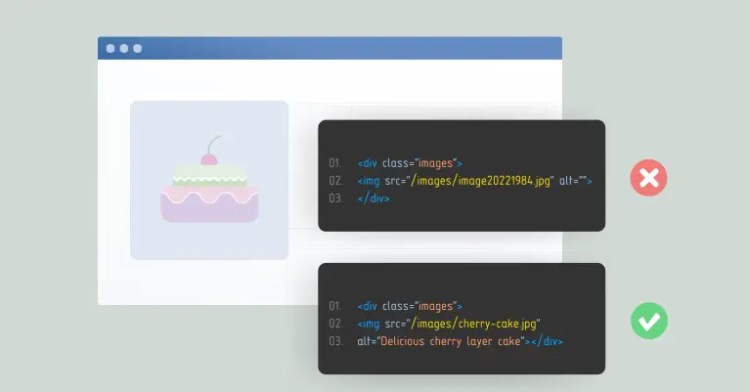Ranking on Google, specifically high on the Search Engine Results Page (SERP), is a goal every website owner and digital marketer aspires to reach. But why is this spot so coveted? And how can you navigate your way to the top? Hold tight; we’re about to embark on an SEO journey that will answer these questions and more!
In today’s digital age, where most consumers start their search online, securing a spot on the first page of Google isn’t just a nice-to-have – it’s a must-have. It’s the starting point of your online success, the ticket to visibility, and the pathway to reaching more potential customers.
Join me as we explore the essential aspects of SERP, the foundation of SEO, the art of building links, content optimization, and much more. Whether you’re a beginner or an experienced marketer, this guide will provide you with the tools and insights to climb the ranks and make your mark on Google’s coveted first page.
So, grab your virtual hiking gear, and let’s set off on this exciting adventure!
Understanding SERP
What is SERP?
Search Engine Results Page (SERP) is the term used to describe the list of results that search engines like Google display in response to a user’s query. Imagine typing a question or keyword into the search bar and hitting enter; the page that appears with all the links, snippets, and ads is the SERP. It’s like the storefront window of the digital world, showcasing the most relevant options for your browsing pleasure.
Why is SERP Important?
Now, why does SERP matter so much? Think about it this way: when you search for something, how often do you go beyond the first page of results? Rarely, right?
Being on the first page of SERP is akin to having your shop on the bustling main street instead of a hidden alley. It increases visibility, drives organic traffic, and significantly enhances your brand’s credibility. In a world where the competition for attention is fierce, ranking on Google, specifically, the first page of SERP, is critical in getting noticed. It’s like being invited to the most exclusive party in town – everyone wants to be there, but only those who make the effort and play by the rules get the golden ticket.
So, understanding and optimizing for SERP is not just a technical task; it’s a strategic endeavor that can pave the way for business success, brand recognition, and online growth. Are you ready to make the SERP your stage?

SEO Basics
Keyword Research
Keywords are the backbone of SEO. They are the terms and phrases that potential customers use to search for your products or services. Identifying the right keywords is akin to reading your customer’s minds; it helps you understand what they’re looking for.
Keyword research involves:
- Understanding your audience’s language and behavior.
- Identifying both broad and specific keywords related to your business.
- Analyzing the competition and finding gaps in the market.
- Utilizing tools like Google Keyword Planner, Moz, or SEMrush to discover the best keywords.
Think of it as fishing in the vast ocean of the internet; using the right bait (keywords) will attract the right catch (your target audience).
On-Page SEO
On-Page SEO refers to optimizing individual web pages to rank on Google higher than other pages on search engines. It’s like tidying up your room to impress your guests. It includes several elements, two of which are Meta Tags and Alt Text for Images.
Meta Tags
Meta Tags are invisible to your site visitors but essential to search engines. They consist of Meta Titles and Meta Descriptions.
- Meta Titles: These are like newspaper headlines; they should be catchy and relevant to the content. It’s the first thing people see on the SERP.
- Meta Descriptions: Think of this as the subtitle; it summarizes what the page is about. A compelling Meta Description can act as a persuasive invitation to click.
Meta Tags tell search engines what your page is about, and crafting them with care can positively influence your ranking.
Alt Text for Images

Ever wondered how search engines “see” images? They don’t; they “read” them through Alt Text. Alt Text is a description you provide for an image, allowing search engines to understand what the image represents.
Imagine trying to explain a beautiful painting to someone over the phone; that’s what Alt Text does for search engines. It’s essential for accessibility, too, aiding visually impaired users in understanding the image’s content.
Remember:
- Use relevant keywords in Alt Text.
- Keep it concise and descriptive.
- Avoid stuffing keywords; keep it natural.
In the garden of SEO, Keyword Research, Meta Tags, and Alt Text for Images are like the seeds, water, and sunlight needed for growth. Understanding and implementing these basics can cultivate a thriving online presence, helping you stand tall in the crowded digital landscape. How’s your garden growing?
Building Links
Link building is an essential component of SEO. It’s akin to a network of roads connecting various towns; the more connected you are, the easier it is to be found.
Quality Backlinks
Backlinks are links from one website to a page on another website. But not all backlinks are created equal. Quality Backlinks are like the glowing recommendations on a job application; they tell search engines that others vouch for your content.
Here’s why quality backlinks matter and how you can attain them:
- Relevance and Trustworthiness: Think of backlinks as friendships; you want to be associated with the right crowd. Links from relevant and authoritative sites boost your credibility.
- Diverse Link Profile: A variety of links from different domains shows that your content is universally appealing. It’s like having a diverse group of friends each validating your character.
- Avoiding Spammy Links: Low-quality links from spammy websites can harm your reputation. It’s like a bad reference on a resume; it does more harm than good.
- Building Relationships: Networking with industry leaders and contributing valuable content, such as guest posts, can earn you quality backlinks. It’s like building friendships based on trust and mutual respect.
- Content That Attracts Links: Create content that others naturally want to link to. It could be a comprehensive guide, a thought-provoking opinion piece, or a unique research study. If it’s valuable, links will follow like bees to honey.
- Using Tools to Analyze Backlinks: Tools like Ahrefs or Moz can help you analyze your backlink profile, understand where you stand, and find opportunities to build quality links.
Building quality backlinks is an art and a science. It requires a deep understanding of your audience, a commitment to providing value, and a continuous effort to network and build relationships within your industry.
Imagine building a majestic castle; each quality backlink is a stone, contributing to the structure’s stability and grandeur. Are you ready to lay the foundation and see your online empire grow? Quality backlinks are the way to do it!
Content Optimization
Content is the heart and soul of your online presence. It’s your conversation with visitors, the story you tell, and the value you provide. Optimizing your content ensures you capture attention and engage and convert your readers.

Creating Engaging Content
Engaging content is like a gripping novel that you can’t put down; it draws you in and keeps you coming back for more. Here’s how to create such content:
- Know Your Audience: Just as a comedian must know their audience to land jokes, you must understand your readers’ needs, preferences, and pain points.
- Use a Conversational Tone: Write as if you’re having a coffee chat with your readers. It’s friendly, approachable, and relatable.
- Add Visuals: A picture is worth a thousand words; visuals break the monotony and explain complex ideas simply.
- Tell a Story: Share anecdotes and experiences, or create scenarios that make your content more personal and engaging.
- Include Calls to Action: Guide your readers on what to do next, like subscribing, sharing, or buying.
- Provide Value: Be helpful, provide solutions, and make your reader’s life better in some way.
It’s like baking a cake; the right ingredients, mixed with love and creativity, make a delightful treat.
Updating Existing Content
Sometimes, it’s not about creating new content but about revitalizing the old. It’s like renovating a house; a fresh coat of paint can do wonders.
- Audit Your Content: Identify outdated information, broken links, or content that could perform better.
- Refresh with Current Information: Add new data, insights, or examples to keep the content relevant.
- Improve SEO: Update keywords, meta tags, or headings based on current best practices.
- Add Multimedia: Enhance with videos, infographics, or images to make it more appealing.
- Encourage Engagement: Ask questions, invite comments, or add social sharing buttons.
Imagine your website as a library; over time, some books may become outdated or worn out. Updating those books keeps the library fresh, inviting, and valuable.
In the bustling bazaar of the internet, your content is your voice, your personality, your shopfront. Optimizing it ensures that you attract visitors and engage them in meaningful ways, turning casual browsers into loyal customers. Are you ready to turn your online space into an engaging hub that resonates with your audience? Content optimization is the key!
Monitoring and Analyzing
Success in the digital world is not a set-and-forget game. It’s like tending to a garden; you need to water, prune, and keep an eye on its growth. Monitoring and analyzing your SEO efforts are critical to understanding what’s working and what’s not, allowing you to make informed decisions.

Tools to Track Performance
Imagine navigating a ship without a compass; you’d be lost at sea. In the vast ocean of digital marketing, tools to track performance act as your compass, guiding you towards success. Here’s a look at what they offer:
- Google Analytics: The Swiss army knife of web analytics. It helps you understand where your traffic is coming from, what pages are most popular, and how users are interacting with your site.
- Google Search Console: Think of it as a health check-up for your site. It highlights issues with indexing, mobile usability, and provides insights into how Google sees your site.
- SEMrush: A versatile tool that offers insights into your keywords, competitor analysis, and site audit. It’s like having a spyglass into the industry landscape.
- Moz: With features like MozRank and Domain Authority, Moz provides a nuanced view of your site’s standing in the online world. It’s like a credit score for your website.
- Ahrefs: This tool is particularly strong in backlink analysis. It helps you understand who’s linking to you and how valuable those links are. It’s like a map of your connections in the digital world.
- Heatmaps (such as Crazy Egg): Heatmaps show where users are clicking and how they’re navigating your site. It’s like watching footprints in the sand, revealing the path your visitors take.
- Social Media Analytics: Platforms like Facebook Insights, Twitter Analytics, and others help you understand how your social media efforts are contributing to your overall online presence.
- Custom Dashboards: Tools like Google Data Studio allow you to create customized dashboards, combining various data sources in one place. It’s like having a command center for your digital strategy.
Monitoring and analyzing are continuous, iterative processes. They require you to be curious, responsive, and proactive, like a seasoned gardener tending to their plants, always looking for ways to nourish and nurture.
Are you using these tools to guide your way? Are you keeping a vigilant eye on your digital garden, ensuring everything grows as it should? The tools are there; it’s time to use them to their full potential!
Final Thoughts
Ranking on Google and making a mark on the SERP is not just a feat; it’s a continuous journey. Think of it as hiking up a mountain; the view from the top is spectacular, but the path is filled with challenges, twists, and turns. From understanding SERP to diving into the nuances of SEO basics like keyword research and on-page SEO, building quality backlinks, crafting engaging content, and employing sophisticated tools for monitoring and analyzing, it’s a multifaceted endeavor that demands dedication, knowledge, and creativity.
What makes this journey exciting is the constant evolution and the opportunity to learn, grow, and adapt. Like a thrilling novel with many chapters, the story of SEO and SERP is dynamic and engaging.
The digital world is bustling, vibrant, and full of opportunities. Are you ready to seize them? Are you prepared to make the SERP your stage, to dance to the rhythm of algorithms, and to charm your audience with valuable, engaging content? The path is laid out; the tools are at your disposal. All that’s left is to embark on this exciting journey, guided by the insights and strategies outlined in this guide.
Remember, success in the world of SERP isn’t about a single sprint; it’s a marathon. It’s about endurance, agility, and a willingness to keep learning and growing. So, lace up your digital shoes and start running. The finish line is just the beginning of a new adventure!





